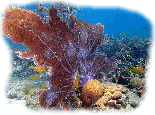- Home
- About S&T
- Taxa/Organisms
- Ecosystems
- Issues
- Methods & Tools
- Reports & Publications
- Location
- Search
December 2008 | Publisher: USGS | Format: URL
soundwaves.usgs.gov — Kristen Hart and Keith Ludwig of the USGS Florida Integrated Science Center (FISC) participated in two research cruises in 2008 to study patterns of habitat use by endangered sea turtles in and around the National Park. Hart's research effort focuses on quantifying patterns of sea turtle habitat use, employing capture-recapture and satellite- and More...

June 2008 | Publisher: Other Federal Agency (U.S. Environmental Protection Agency (EPA)) | Format: URL
www.climatescience.gov — The U.S. Environmental Protection Agency has released a report that can help reduce the potential impact of climate change on estuaries, forests, wetlands, coral reefs, and other sensitive ecosystems. The report identifies strategies to protect the environment as these changes occur. The report finds that climate change can increase the impact of More...

Publisher: USGS | Science Center: Florida Integrated Science Center (FISC, Gainesville) | Format: URL
fl.biology.usgs.gov — The connection between fish habitat utilization, prey use, and fish movement patterns is not known in relation to available invertebrate prey resources in off-reef sites. Developing a better understanding of the habitat use, diet, and resource needs of benthic communities and their interactions with mobile fish and invertebrates is an important More...

Publisher: USGS | Science Center: Western Fisheries Research Center (WFRC, Seattle) | Format: URL
wfrc.usgs.gov — There are approximately 500,000 abandoned mines in the western US. Collectively, these mines pollute rivers, streams, and western reservoirs with millions of tons of metals annually that degrade aquatic habitat and water used by humans for drinking, recreation, and irrigation. However, there is great potential in decreasing or eliminating the flow More...

Publisher: USGS | Science Center: Florida Integrated Science Center (FISC, Gainesville) | Format: URL
fl.biology.usgs.gov — Coral Reefs in the Caribbean and western Atlantic are deteriorating in response to hurricanes, coral diseases, anchor damage, sedimentation, and other stresses. USGS biologists at the Caribbean Field Station are documenting the current status of coral reefs and the effects of some of these stresses. The primary objective of this issue overview is More...

Publisher: USGS | Science Center: Florida Integrated Science Center (FISC, Gainesville) | Format: URL
fl.biology.usgs.gov — This 4-year multidisciplinary research program will focus on understanding the physical oceanography, biology, ecology, genetic connectivity, and trophodynamics of deep coral environments in the Gulf of Mexico (300-1000 m depths), both within natural and artificial (shipwreck) sites. A combination of traditional techniques (for example, More...
